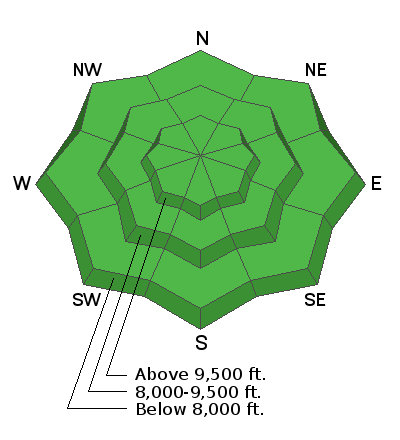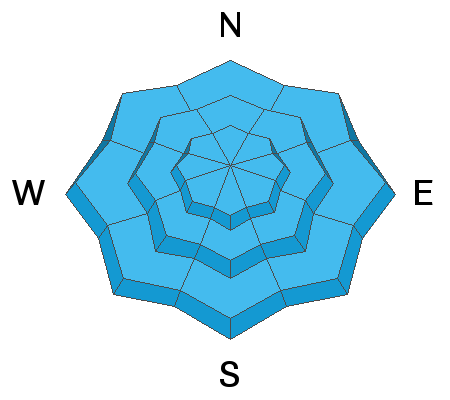Thanks to the generous support of our local resorts and Ski Utah, discount lift tickets are now available. Support the UAC while you ski at the resorts this season. Tickets are available
here.Currently: Skies are mostly clear and temperatures ranging through the 20's F with lower-elevation trailheads (where cold air sinks) in the low teens. Winds are westerly and have increased overnight: at mid elevations winds are averaging in the teens with gusts in the 20's while upper-elevation wind speeds are averaging in the 30's with gusts around 60 mph.
Today: Partly-cloudy skies with temperatures in the 20's F. The westerly winds will be strongest this morning, but remain elevated throughout the day, averaging in the teens with gusts in the 20's at the mid elevations; averaging in the 30's with gusts in the 50's mph at upper elevations.
This Week: A series of weak weather systems will pass through this coming week bringing colder temperatures. Although each system looks depleted of any moisture, we may get an inch or two of snow Tuesday into Wednesday.
For those practicing Dryuary, I suspect this isn't what you had in mind. Continued storminess early this month exaggerated January snow/water totals of 29.5"/4.77" at the Collins Study Plot but it essentially hasn't snowed since January 8 with most regions reporting fewer than 12" of snow over the past 3+ weeks. The cold and clear weather has weakened the snow surface with the top several inches of snow now very weak and faceted. Bo Torrey has a
nice observation from mid Big Cottonwood Canyon and Drew's video below illustrates the current weak snow surface.
What does weak snow at the surface mean? For now, this "recycled powder" continues to provide decent travel and riding conditions in sun and wind-sheltered terrain. But once storms do return (and they will), we will possibly enter a period of dangerous avalanche conditions.
On Sunday, a
catch-and-carry on the Catcher's Mitt on Kessler where a skier triggered a sluff in the weak surface snow on a steep, 40° slope. The skier was briefly caught and carried over a 10' cliffband and fortunately stopped short before going over a 30' cliff. I encourage you to read through this
honest, well-described account of how getting caught in a small avalanche can be consequential in steep terrain.









